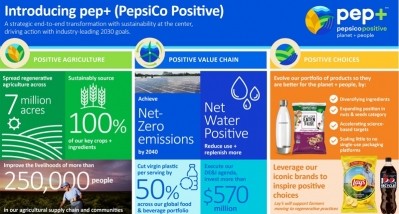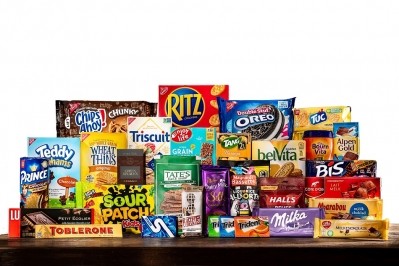CPG giants reshape portfolios with significant divestitures, limited acquisitions

Executives of several large CPG players at the Consumer Analysts Group of New York 2021 virtual conference this week noted they were “reshaping” their company portfolios to better meet evolving consumer shopping habits and demands during and after the pandemic – a process that for many means shedding under-performing brands or those that no longer fit within new focus areas.
This could create opportunities for buyers willing to invest in or modernize underperforming brands or hold on to those in segments hard hit by the pandemic, like food service, until the economy recovers and safety measures no longer restrict consumers.
A few companies presenting at CAGNY, however, also noted a willingness to explore bolt-on acquisitions or those that could be accretive quickly or contribute to long-term growth goals, which typically ranged from sales increases of 3-6% year-over-year for the foreseeable future.
Trimming tails
Among those companies looking to divest brands to simplify supply chains and manufacturing after experiencing out-of-stocks due to constraints during the pandemic are JM Smucker, Kraft Heinz, Mondelez, General Mills and Unilever.
Both Kraft Heinz and Mondelez are planning aggressive divestments of 20% and 25% of their lowest performing SKUs respectively, according to executives who presented at CAGNY.
For Kraft Heinz, lopping off 20% of SKUs by the end of the year is expected to result in a 25% increase in net sales per SKU, as well as allow it to reduce complexity and improve collaboration with retail and production partners, Kraft Heinz US Zone President Carlos Abrams-Rivera explained.
The divestitures would free resources for Kraft Heinz to continue ongoing efforts to renovate more than 40% of its portfolio and support SKUs that it believes will make the greatest impact on its top and bottom lines.
“At the same time, we are building a pipeline of innovation to generate consumers’ excitement and drive incremental purchases by focusing our efforts,” Abrams-Rivera said, adding that the company is focusing its innovation efforts on fewer, higher quality projects to deliver more significant impact per project.
Like Kraft Heinz, Mondelez’s CEO Dirk Van De Put noted that divesting under-performing brands would allow it to focus on the most promising innovations as well as boost strong performing existing SKUs with significant runway.
JM Smucker is looking to make similarly deep cuts with a target of discontinuing 30% of SKUs within its away from home business, which has been hard hit by the pandemic. While this may sound steep, CEO and President Mark Smucker assured that these items account for just 3% of the business’ net sales and he anticipates that customers will transition to other offerings within the company’s portfolio.
General Mills isn’t looking to make as deep a cut as some other players. CEO Jeff Harmening told analysts at CAGNY that the company is targeting strategic divestures worth roughly 5% of sales and is focused on businesses where it doesn’t see sufficient growth potential or with a base of only 2-3% organic net sales growth.
This strategy should deliver mid-single-digit growth and adjusted operating profit with a modest level of margin expansion, Harmening said, adding that General Mills has a “solid track record on this front,” pointing to the company’s divestment of Green Giant as an example.
JM Smucker, General Mills open to acquisitions
Of these companies, JM Smucker and General Mills said they also are interested in acquiring brands that align with their strategic priorities, and Mondelez has revealed its willingness to do this as well with the recent acquisition of the premium chocolate and snack brand Hu in the first quarter of fiscal 2021.
For JM Smucker, this means evaluating opportunities that align with its portfolio in key growth platforms, which it identified as coffee, pet food and snacking.
General Mills also has its eye on bolt-on acquisitions that fit within its core markets or, if in new growth platforms, that it can support with existing capabilities. Either way, they will need to open the company’s ability to tap into higher growth areas, Harmening said.
PepsiCo is ‘pleased with our current portfolio’
A notable exception to the general consensus among large CPG food and beverage companies to “reshape” portfolios is PepsiCo, of which the vice chairman and chief financial officer Hugh Johnston repeatedly said during his Feb. 17 CAGNY presentation that the company “very pleased with our current portfolio.”
He explained that PepsiCo’s shopping spree in recent years, which totaled $10.58b between 2018 and 2020 and far outpaced the $556m spent on M&A between 2013-2017, effectively filled “portfolio gaps in the business.”
For example, he noted that PepsiCo’s acquisition of SodaStream allowed the company to offer consumers a more environmentally-friendly and customizable beverage option. Likewise, he said, PepsiCo’s acquisition of BFY Brands complemented Frito-Lay’s portfolio and expanded its “winning with a purpose agenda to offer consumers more nutritious options while enabling popping technologies to produce non-fried crispy snacks.”
Finally, he said, PepsiCo’s most recent acquisition of Rockstar beverage expanded its reach into the fast-growing and highly profitable energy category at a time when consumers lives have become busier.
As anticipated, these acquisitions took a toll on PepsiCo’s net return on investment capital – bringing it down from 24.8% in 2018 to 19.9% in 2020, it also impacted the company’s free cash flow conversion, which was at 84% in 2020 versus 78% in 2018.
Nonetheless, Johnston reiterated that PepsiCo is “very pleased with the composition of our portfolio,” and as such, “our priorities have shifted toward maximizing growth and returns from these assets in a disciplined fashion.”
One way the company will do this is by investing in new manufacturing capabilities to capture increased demand during the pandemic, which it expects to remain elevated, and unlock previous capacity constraints in snacks and beverages.
“For example, we are leveraging our additional manufacturing capacity to rebrand and reposition our Lays Kettle Cooked chips around bigger flavors. For beverages, we are looking to secure additional capacity and are developing plans to have increased speed to market in order to meet higher service levels for our Gatorade brand,” Johnston said.
PepsiCo plans to drive demand for its existing brands further by revitalizing its large, well-known brands, such as Lays, Doritos, Mountain Dew and Pepsi, through flavor extensions, diverse package mix offerings and strong brand acquisition campaigns which continuously refresh the business to meet changing consumer preferences.
The company also plans to “lift and shift” innovation by doubling the number of international markets for its Flamin’ Hot flavor profile and significantly expand the presence and availability of Pepsi Black or Zero Sugar, as well as extend assets and brands into new areas, such as with Cheetos mac & cheese.
Whether reinvesting in existing brands, or shedding under performing ones to acquire new options is a better strategy to respond to consumers’ quickly shifting shopping habits will depend on the company, execution and uncertain market, which continues to be shaped by the pandemic and newly developed work and lifestyle habits.










